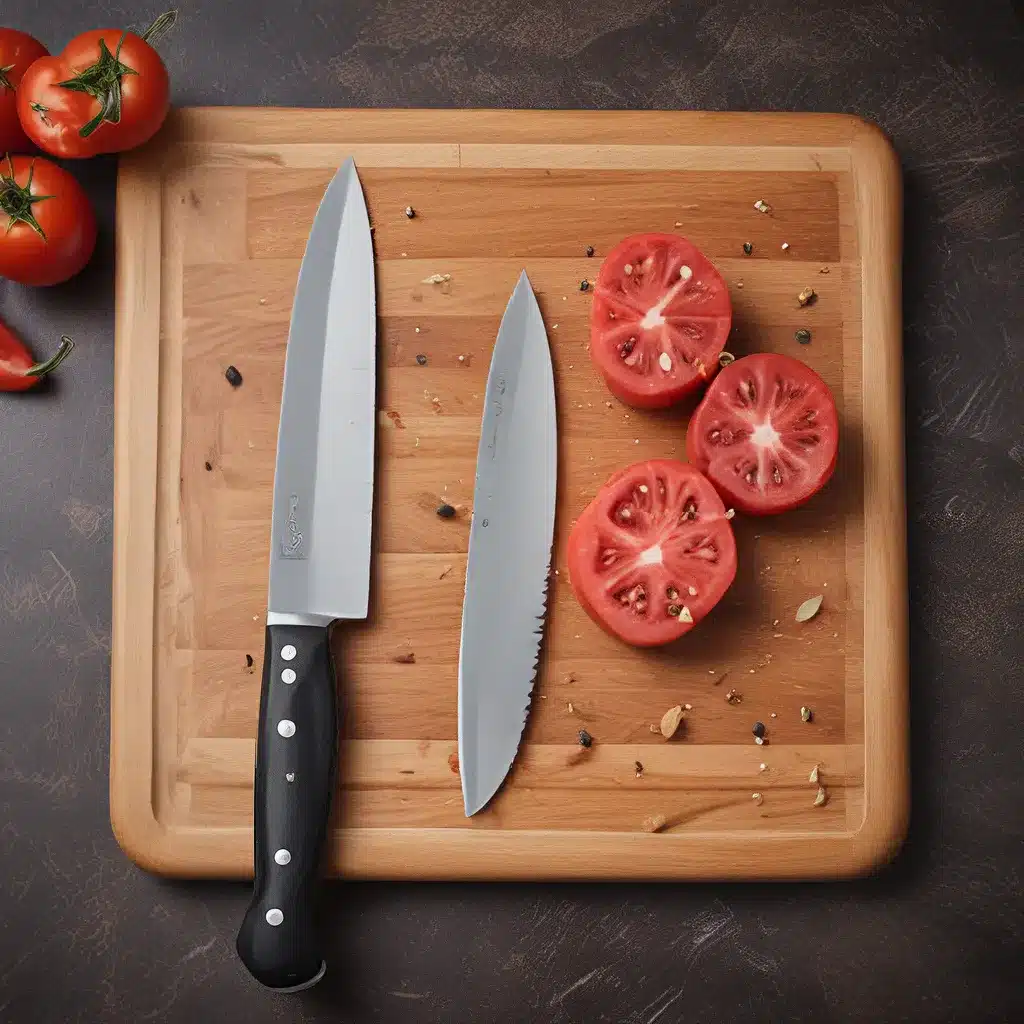
Alright, let’s get our knife skills on! As a self-proclaimed kitchen ninja, I’m thrilled to share my tips and tricks for mastering the art of chopping, slicing, and dicing like a pro. Whether you’re a seasoned home cook or a newbie in the kitchen, these essential knife skills are going to take your culinary game to the next level.
The Importance of Knife Skills
Let’s be real – a sharp knife is the key to a happy kitchen. Proper knife skills not only make meal prep faster and more efficient, but they also improve the overall quality and presentation of your dishes. Imagine perfectly diced onions, evenly sliced vegetables, and beautifully julienned herbs – it’s a game-changer, my friends.
But the benefits of honing your knife skills go beyond aesthetics. Handling a knife with confidence and control can also prevent accidents and injuries in the kitchen. After all, a dull, unwieldy knife is much more likely to slip and cause a nasty cut than a sharp, precisely maneuvered one.
The Basics: Grip, Stance, and Cutting Techniques
Before we dive into the nitty-gritty of specific knife skills, let’s start with the fundamentals. Proper knife handling is all about grip, stance, and technique.
The Grip
The most common and stable grip is the claw grip, where you curl your fingers under and grip the sides of the blade with your thumb and index finger. This gives you maximum control and stability while keeping your fingers safely out of the way.
The Stance
Maintain a stable, balanced stance with your feet shoulder-width apart and your weight evenly distributed. Bend your knees slightly and keep your elbows tucked in close to your body. This allows you to apply force and control the knife with precision.
Cutting Techniques
When it comes to cutting, the key is to use a smooth, rocking motion. Start by placing the tip of the knife on the cutting board and gently rock the blade back and forth, gradually increasing the pressure and depth of the cut. Avoid chopping straight down, as this can lead to uneven, ragged edges.
Mastering the Basics: Chop, Slice, and Dice
Now that we’ve covered the fundamentals, let’s dive into the three essential knife skills: chopping, slicing, and dicing.
Chopping
Chopping is the go-to technique for reducing larger ingredients into smaller, bite-sized pieces. To chop, start by using the claw grip to hold the ingredient steady on the cutting board. Then, use a series of straight, vertical cuts to create uniform chunks. Remember to keep your fingers curled under and your knuckles aligned with the blade for maximum control.
Slicing
Slicing is all about creating thin, even pieces. Position your ingredient on the cutting board and use a gentle, back-and-forth motion to gently slice through it. Keep your knife parallel to the cutting board and use your free hand to guide the ingredient as you slice.
Dicing
Dicing takes the chopping technique one step further, resulting in small, uniform cubes. First, chop the ingredient into long, thin strips. Then, rotate the strips 90 degrees and chop again, creating a grid-like pattern of diced pieces.
Knife Care and Maintenance
Now, let’s talk about keeping your knives in tip-top shape. Proper knife care and maintenance is essential for ensuring their longevity and performance.
Sharpening
A sharp knife is a safe knife, so be sure to sharpen your blades regularly. You can use a manual sharpener, a honing steel, or even take them to a professional for a more thorough sharpening.
Cleaning and Storage
Always hand-wash your knives with warm, soapy water and dry them immediately to prevent rust and corrosion. Store them safely in a knife block, magnetic strip, or sheath to protect both the blade and your fingers.
Putting It All Together: Knife Skills in the Kitchen
Now that you’ve mastered the basics, it’s time to put your newfound knife skills to the test in the kitchen. Here are a few ways to elevate your cooking with precise knife work:
- Uniform Cuts: Evenly sliced vegetables and fruits ensure even cooking and a professional-looking presentation.
- Intricate Garnishes: Fancy knife techniques like julienne, brunoise, and paysanne can transform simple ingredients into beautiful garnishes.
- Time-Saving Prep: Efficient chopping, dicing, and slicing can drastically reduce your meal prep time, making cooking a breeze.
Remember, practice makes perfect, so don’t be afraid to get in the kitchen and start honing your skills. And who knows – you might just impress your friends and family with your knife-wielding prowess!
If you’re looking to take your knife skills to the next level, be sure to check out the knife skills classes offered by our partners. They’ll help you conquer the art of chopping, slicing, and dicing like a true culinary master.

